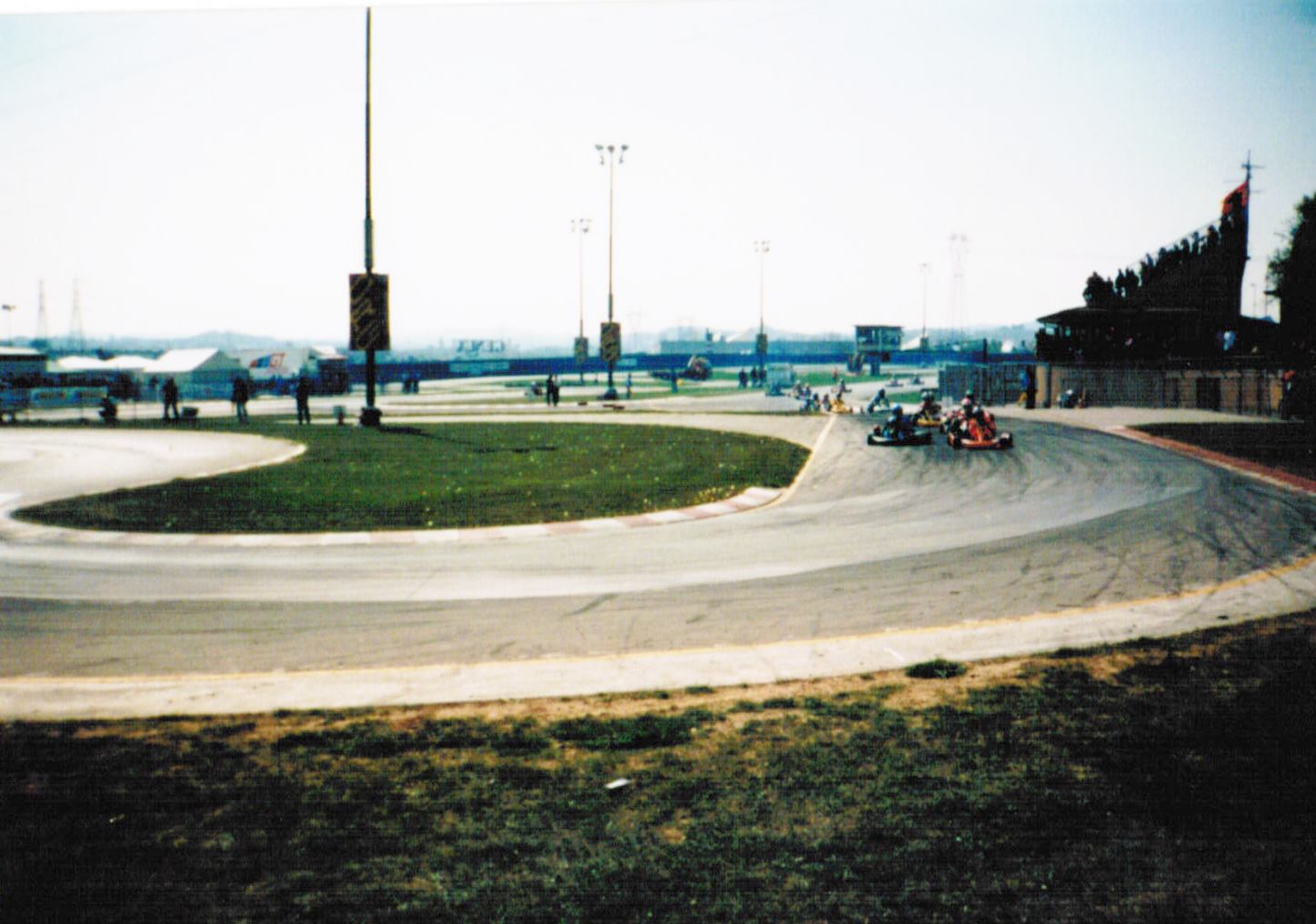Dom, I don’t get to participate much on this forum but I thought this was an interesting topic. To be clear there are two types of karts 1) karts with a single speed/no gearbox and 2) karts with multiple speeds/gearbox. A kart with a single speed can either have a clutch or not.
In the early days, most karts were direct drive, meaning the engine was directly connected to the axle by a chain. In order for the engine to run the kart had to be moving and vice versa. Later clutches were used so that a kart could be started while standing still. There are dry clutches and wet clutches. Wet clutches can engage at higher RPMs but tend to slip more, as dry clutches can lock fully. Clutches were very useful on US tracks which tend to have narrower pavement and tighter hairpin type corners than European tracks, which tend to be much wider and have higher speed corners. For many years there was a general rule that US karts used clutches and European karts stayed direct drive. There was an argument that direct drives were more efficient and could put more power into the axle, the rotational weight of the clutch would slow down the engine which did not allow as many RPMs. This is pretty much fact as the highest revving clutched engines reach about 14,000 RPM and the highest revving direct drive engines reach up to 20,000 or more RPM.
When you brake a clutched engine if you brake too hard, you can actually turn the engine off. And you want to keep the clutch close to initial engagement. So the fastest way to drive tends to be braking and throttling at the same time. Honestly I don’t remember hearing much of anything peculiar when slowing down.
On a direct drive kart its a totally different story. Because you can actually stop and restart the engine during braking. During very hard braking it is not uncommon to intermittently turn the engine off. You will hear a very distinct “chirping” sounds as the engine stops and starts rapidly during braking. The advantage is that you can brake “very hard” and that you can control the direction of the kart under braking much better, it is virtually possible to turn 90 degrees without losing much speed at all. We used to recon this to watching UFO’s. There was a move made famous in the 80’s and 90’s called the “Swedish flick” in which you could actually turn the kart the opposite direction during braking (i.e. turn right, before a left hand turn), and then set the kart in a single motion to pivot around the direction you needed to turn, and the kart would instantly be set off in that direction. This makes a lot of very strange sounds for sure and it is very entertaining to watch! However this is not possible in a kart with clutch.
Later they added starter motors to karts and virtually all karts got clutches, direct drive pretty much disappeared. This was in an effort to reduce the cost of engine tuning and was packaged with a lot of other things (water cooling, larger bores, lower RPM, pop off exhaust valves etc…). In theory engines running at lower RPM need to be rebuilt less often, can have bigger tolerances and are not as sensitive to casting deficiencies.
Very recently, I think just last year, direct drive engines were reintroduced to karting. In general, the more complex starter engines are just a lot heavier, and not very fun to drive compared to the old days.
Then there are gearbox karts. They definitely shift gears up and down! Just like a motorcycle. So you will hear them downshifting into a corner and upshifting on the way out. The gears are generally close and shifting happens pretty fast. They have a clutch but it is operated by the driver, not centrifugal force. So when the clutch is locked it is also for all intents a direct drive system. The clutch is not used between gears because the gearboxes are synchronous and sequential just like a motorcycle and the shift directly from one gear to the next. It is not possible to jump gears from 3rd to 5th for example or short shift. You have to pass through all the gears so during a given lap, you shift a lot of times! You will hear this very distinctly and it will be obvious!
I hope this helps.

 (in fact we used to actually call it “riding” the kart because it was so intense!) Thats Gandolfi going into the 1st turn at Garda at about 45 degrees at the European Championship 1994. Trulli, Manetti, Orsini, Pantano and Gianniberti were all racing that year. It was beautiful!
(in fact we used to actually call it “riding” the kart because it was so intense!) Thats Gandolfi going into the 1st turn at Garda at about 45 degrees at the European Championship 1994. Trulli, Manetti, Orsini, Pantano and Gianniberti were all racing that year. It was beautiful!
